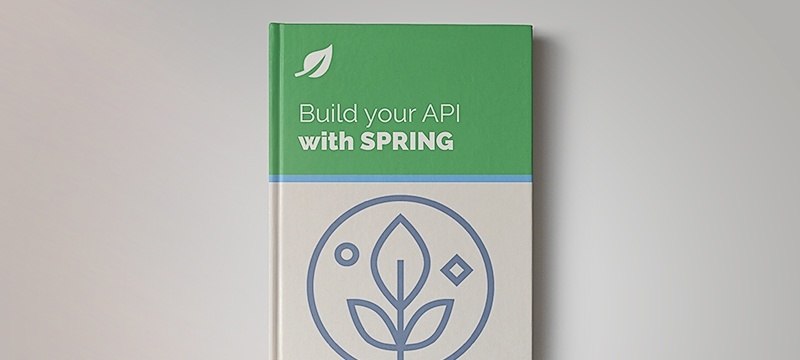1. Introduction
In this article, we’re going to describe and see examples of how to work with JSON in a Groovy application.
First of all, to get the examples of this article up and running, we need to set up our pom.xml:
<build>
<plugins>
// ...
<plugin>
<groupId>org.codehaus.gmavenplus</groupId>
<artifactId>gmavenplus-plugin</artifactId>
<version>2.1.0</version>
</plugin>
</plugins>
</build>
<dependencies>
// ...
<dependency>
<groupId>org.codehaus.groovy</groupId>
<artifactId>groovy-all</artifactId>
<version>3.0.15</version>
</dependency>
</dependencies>
The most recent Maven plugin can be found here and the latest version of the groovy-all here.
2. Parsing Groovy Objects to JSON
Converting Objects to JSON in Groovy is pretty simple, let’s assume we have an Account class:
class Account {
String id
BigDecimal value
Date createdAt
}
To convert an instance of that class to a JSON String, we need to use the JsonOutput class and make a call to the static method toJson():
Account account = new Account(
id: '123',
value: 15.6,
createdAt: new SimpleDateFormat('MM/dd/yyyy').parse('01/01/2018')
)
println JsonOutput.toJson(account)
As a result, we’ll get the parsed JSON String:
{"value":15.6,"createdAt":"2018-01-01T02:00:00+0000","id":"123"}
2.1. Customizing the JSON Output
As we can see, the date output isn’t what we wanted. For that purpose, starting with version 2.5, the package groovy.json comes with a dedicated set of tools.
With the JsonGenerator class, we can define options to the JSON output:
JsonGenerator generator = new JsonGenerator.Options()
.dateFormat('MM/dd/yyyy')
.excludeFieldsByName('value')
.build()
println generator.toJson(account)
As a result, we’ll get the formatted JSON without the value field we excluded and with the formatted date:
{"createdAt":"01/01/2018","id":"123"}
With the methods above we saw that the JSON output was always in a single line, and it can get confusing if a more complex object has to be dealt with.
However, we can format our output using the prettyPrint method:
String json = generator.toJson(account)
println JsonOutput.prettyPrint(json)
And we get the formatted JSON bellow:
{
"value": 15.6,
"createdAt": "01/01/2018",
"id": "123"
}
3. Parsing JSON to Groovy Objects
We’re going to use Groovy class JsonSlurper to convert from JSON to Objects.
Also, with JsonSlurper we have a bunch of overloaded parse methods and a few specific methods like parseText, parseFile, and others.
We’ll use the parseText to parse a String to an Account class:
def jsonSlurper = new JsonSlurper()
def account = jsonSlurper.parseText('{"id":"123", "value":15.6 }') as Account
In the above code, we have a method that receives a JSON String and returns an Account object, which can be any Groovy Object.
Also, we can parse a JSON String to a Map, calling it without any cast, and with the Groovy dynamic typing, we can have the same as the object.
The default parser implementation for JsonSlurper is JsonParserType.CHAR_BUFFER, but in some cases, we’ll need to deal with a parsing problem.
Let’s look at an example for this: given a JSON String with a date property, JsonSlurper will not correctly create the Object because it will try to parse the date as String:
def jsonSlurper = new JsonSlurper()
def account
= jsonSlurper.parseText('{"id":"123","createdAt":"2018-01-01T02:00:00+0000"}') as Account
As a result, the code above will return an Account object with all properties containing null values.
To resolve that problem, we can use the JsonParserType.INDEX_OVERLAY.
As a result, it will try as hard as possible to avoid creation of String or char arrays:
def jsonSlurper = new JsonSlurper(type: JsonParserType.INDEX_OVERLAY)
def account
= jsonSlurper.parseText('{"id":"123","createdAt":"2018-01-01T02:00:00+0000"}') as Account
Now, the code above will return an Account instance appropriately created.
3.2. Parser Variants
Also, inside the JsonParserType, we have some other implementations:
- JsonParserType.LAX will allow a more relaxed JSON parsing, with comments, no quote strings, etc.
- JsonParserType.CHARACTER_SOURCE is used for large file parsing.
4. Conclusion
We’ve covered a lot of the JSON processing in a Groovy application with a couple of simple examples.
For more information about the groovy.json package classes we can have a look at the Groovy Documentation.
Check the source code of the classes used in this article, as well as some unit tests, in our GitHub repository.





